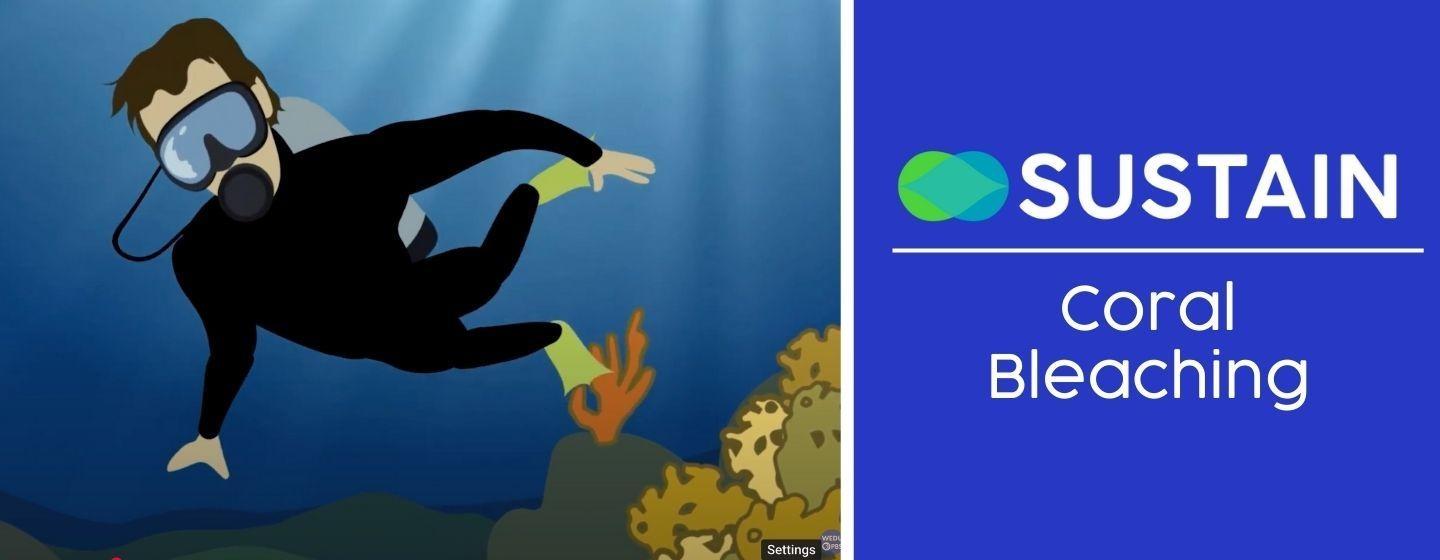Coral Bleaching



Florida is home to the only coral reef system in the continental U.S. The Florida Coral Reef stretches for 360 linear miles from the St. Lucie Inlet to the Dry Tortugas, providing habitat, food and breeding sites for countless animals and plants. The reef also buffers the coastline from storms and attracts visitors, contributing more than $8 billion to the state economy.
But Florida’s Coral Reef is in hot water – literally. The reef’s living coral cover is down to 2%, as the coral struggles to survive in the face of warmer-than-usual ocean temperatures, disease and poor water quality. Researchers are still investigating the toll of the unprecedented coral bleaching event of 2023.
Though they may resemble rocks, corals are actually animals. They’re composed of many individual organisms known as coral polyps, which have hard, limestone skeletons and translucent tissue. The vibrant colors of corals come from tiny algae called zooxanthellae, which provide the corals with energy created from sunlight in exchange for safe shelter. Corals rely on zooxanthellae for more than 85% of their nutrition.
Hot water temperatures can prompt these algae to abandon their coral hosts, leaving corals’ bare, white skeleton exposed in a process known as bleaching. Bleached coral isn’t necessarily dead, and zooxanthellae often return if conditions improve. Too long without zooxanthellae, however, can cause corals to starve to death.
Pollution, oil spills, disease, extreme salinity and low oxygen can also lead to coral bleaching.
Some amount of coral bleaching in Florida waters is normal, particularly in the Keys. But human-caused climate change is increasing the frequency and intensity of severe mass coral bleaching in the state.
In 2023, record high water temperatures triggered Florida’s worst-ever coral bleaching event. Coinciding with an El Niño year, water temperatures started soaring a month earlier than normal, and temperatures didn’t cool off until the fall, subjecting Florida’s corals to broiling heat for almost twice as long as usual. Temperatures on Florida’s Coral Reef reached up to 93 degrees, 5 degrees above the normal maximum.
The 2023 marine heat wave was so unprecedented that the National Oceanic and Atmospheric Administration's Coral Reef Watch program introduced three new levels to its bleaching alert system.
While assessing the damage, Florida Fish and Wildlife Conservation Commission researchers observed many reefs that were completely bleached. They also found significant declines in elkhorn and staghorn corals, both of which are threatened species, and deaths of soft corals caused by heat shock.
Corals need clean, clear water to grow. You can help improve Florida’s water quality by limiting or avoiding the use of fertilizers and pesticides and properly disposing of household chemicals and personal products, which can wash into the ocean with stormwater.
You can reduce the amount of greenhouse gases you contribute to the atmosphere, the main driver of climate change, by driving and flying less, using energy-efficient appliances and lightbulbs, limiting food waste and recycling.
Boaters in the Florida Keys National Marine Sanctuary should use mooring buoys to prevent anchor damage to Florida’s Coral Reef.
If you see bleached, diseased or damaged corals, you can report your findings to Southeast Florida Action Network (SEAFAN) BleachWatch, an early warning network administered by the Florida Department of Environmental Protection.
Divers can also receive training to become part of the BleachWatch Observer Network.
The blog above is part of a digital-only, four-part series called "Experiencing Eco-Anxiety". Each blog supports a video in which a Floridian shares their personal experience with eco-anxiety.
Kon has always felt a deep connection to nature at the beach. But years ago, he noticed signs of coral bleaching — a moment that sparked his anxiety about Florida’s fragile ecosystems. Now, his concern goes beyond himself. Will his family still be able to enjoy Florida’s beaches in 5 to 10 years?